Jun
20
2010
Photography is an illusion of reality, we largely accept that what we see is a truthful representation of what was seen be the person taking the picture. In reality though it is a flat two dimensional facsimile. Even if the photographer doesn’t manipulate the image after the act of capturing it, the image is influenced by the choices that were made in it’s creation. The photographer may have made camera settings or a lens selection in order to effect your perception. This image is an obvious reminder of the artifice but all images are tinged by this reality.
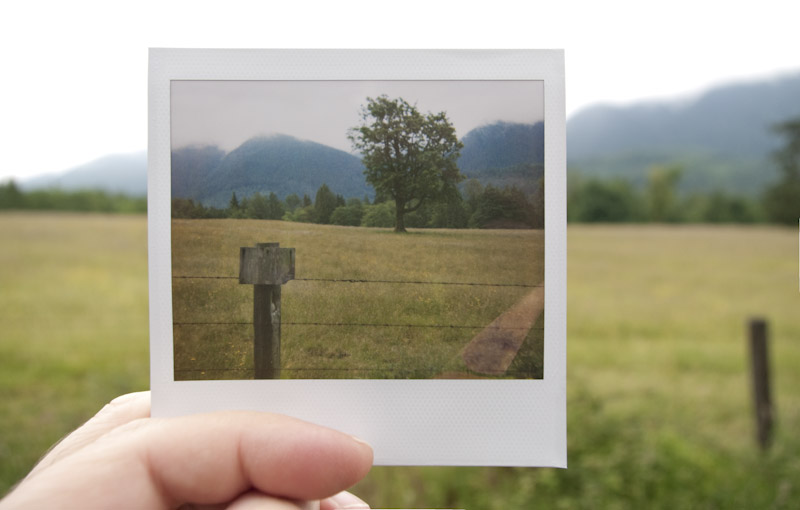
Digital cameras provide the potential for including almost any image modification that are, currently or conceived, of being done on a computer. As the ability to manipulate the image at the time of capture is expanded we may need to remind ourselves about what is real from time to time.
no comments | tags: composition, design, film, Photography | posted in Composition, Photography
Jun
17
2010
One of the great things about taking pictures of dance is that there is always a lot going on. This is especially true behind the scenes where there are dancers waiting to go on and stage directors helping coordinate the entire process. I’ve been fortunate to be able to document some of this and it has provided me with a tremendous opportunity to create images.
While I would never compare myself to Cartier-Bresson he has certainly influenced this image, this is such a brief instant where each of the elements came together. It’s only by being in a state of constant observation that it is possible to see and capture these moments. Beyond that I should probably let the image speak for itself.
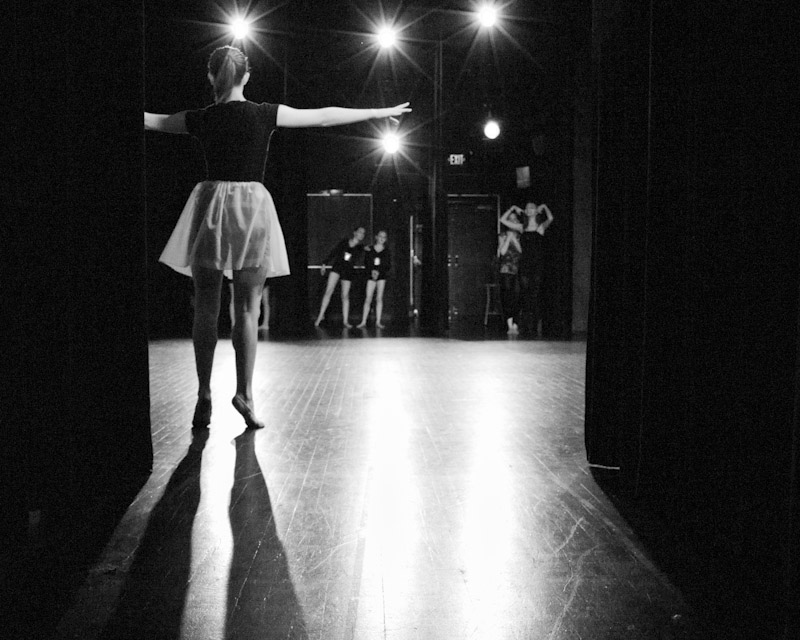
2 comments | tags: composition, Photography | posted in Composition, Photography, Uncategorized
May
26
2010
One of the features of the Pentax K-7 is that you are able to move the sensor by small amounts along the focal plane. The effect of this is to adjust the position of the image formed by the lens on the sensor. This differs slightly from moving the camera and therefore the lens and sensor. Figure 1 shows a lens and sensor positioned so that light from point (A) goes through the center of the lens and reaches the sensor at it’s center (A1). In this scenario point (B) is obscured by point (A) and none of it’s reflected light reaches the lens. Now if we were to move only the sensor using the composition adjustment feature of the K-7 as in Figure 2 The image formed by the lens is relocated on the sensor but because the lens has not moved the relationship of the elements in the scene remain unchanged and point (B) remains obscured. Now if we were to reposition the entire camera as in figure 3 the new position of the lens allows some reflected light from point (B) to reach the sensor. So even though (A1) reaches the senor at the same point in figure 2&3 the image formed differs.
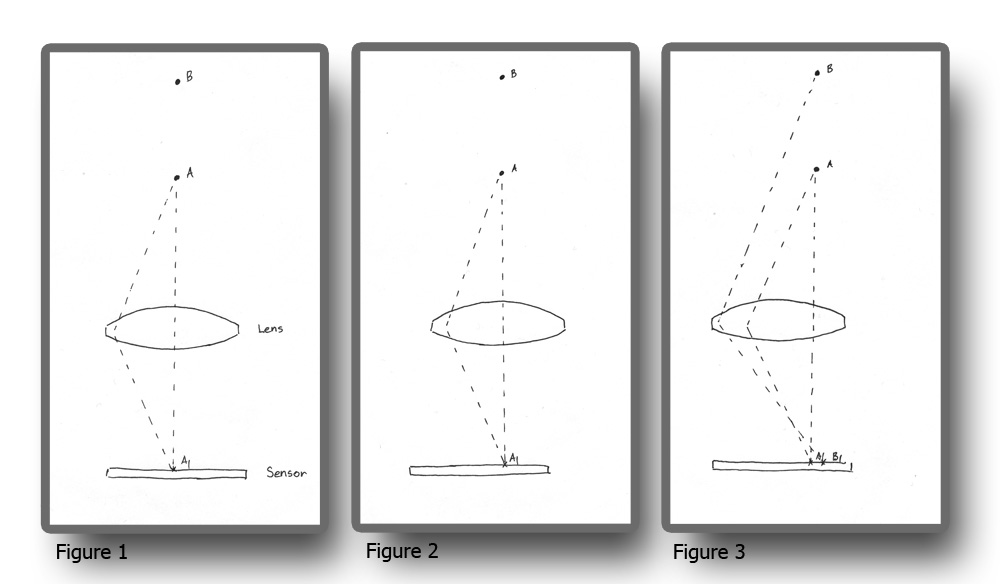
A simple way of demonstrating this effect is to close one eye and hold a piece of paper edge on in front of the other eye. What you will see is a very thin slice of paper, now swap which eye is open and closed while not moving the paper. Now you will see a partial side view of the paper, just as if you repositioned a camera. Of course the distance between your eyes should be greater than the amount the sensor is able to shift so the effect is exaggerated.
Here is the effect demonstrated in practice.

This is the neutral position for the scene

Sensor shifted left
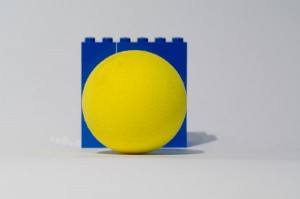
Sensor Shifted Right
Notice how even though the position of the element within the frame changes the relationship does not. The ball appears to just visually touch the right hand edge of the blocks in all three.
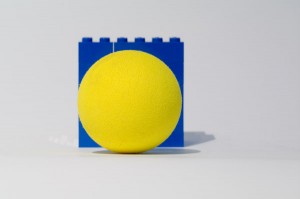
Camera shifted right
Notice how in this instance the right side of the block is now revealed.
So the composition adjust of the Pentax K-7 allows you to modify the framing of a scene while preserving the relationship of the elements of the scene. It also allows rotation of the sensor to further aid in composition. This feature is found under “Rec. Menu 2”
no comments | tags: camera, composition, Pentax, Photography | posted in Cameras, Photography
May
18
2010
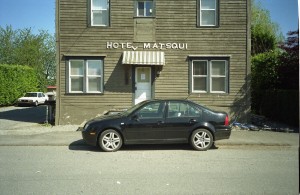
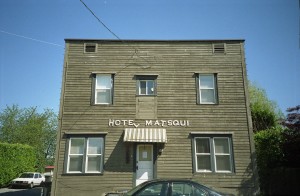 The technique of joining two images together to create a larger view is mainly associated with digital photography but it can also be used with film that has been scanned into the computer. If the intention is to provide multiple viewpoints simultaneously as in a David Hockney photo collage then using stitching software isn’t necessary. If you want to create a seamless view however then you need some way to adjust perspective and join the images. Here I wasn’t able to get in all of the view so I just took two pictures with the intention of stitching them later.
The technique of joining two images together to create a larger view is mainly associated with digital photography but it can also be used with film that has been scanned into the computer. If the intention is to provide multiple viewpoints simultaneously as in a David Hockney photo collage then using stitching software isn’t necessary. If you want to create a seamless view however then you need some way to adjust perspective and join the images. Here I wasn’t able to get in all of the view so I just took two pictures with the intention of stitching them later.

Now I have an image that I was unable to capture within a single frame. I’ve used this technique in more extreme situations such as when I wanted to take a reference photo of a scene behind a construction fence. I blindly took images while holding the camera over the fence and then later pulled them all together into a single scene which will be the basis of a painting.
1 comment | tags: composition, film, Photography, stitching | posted in Composition, Photography, Processing, Uncategorized
May
15
2010

It’s difficult to convey a sense of time photographically, the very nature of a photograph is the capturing of an instant. You can use techniques such as using a slow shutter speed to allow moving objects to blur evoking a sense of motion and time or multiple exposures. But the best way is through a series. This example is two images that were taken more than two years apart. I’ve also purposely placed the most recent image on the left to distort time as most viewers will read this image left to right. Great care was taken to frame the scene the same, this was aided by using live view on my Pentax K-7 DSLR. It allows you to see in real time the framing on the rear LCD of the camera. I also used a photograph of the original scene for comparison.
no comments | tags: composition, design, Pentax, Photography, time | posted in Composition, Photography, Uncategorized
May
6
2010


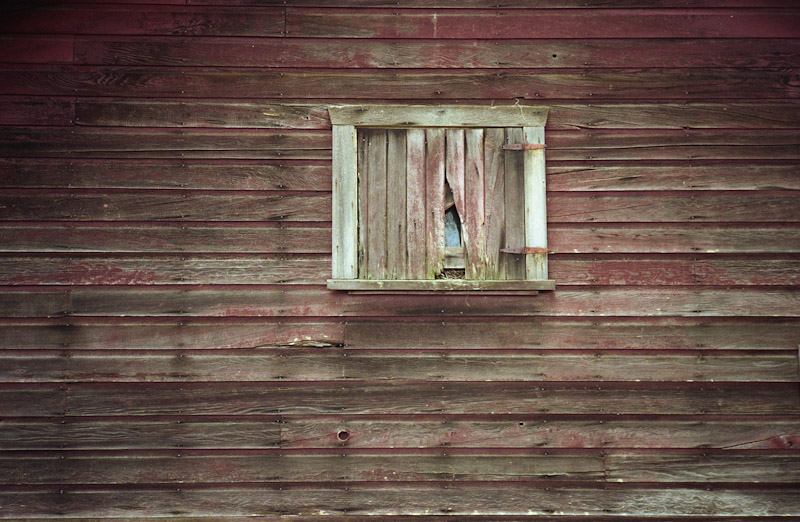
Where do you see rectangles, everywhere? If you can imagine the world in front of you as a flat two dimensional plane it can be an interesting exercise to look for ways to divide it. It can be helpful to look through the viewfinder to generate that flat view and frame a scene but with practice you can spot images without the camera. So why would you want to do this? Like any exercise in seeing it helps to broaden your visual acuity.
no comments | tags: camera, composition, design, film, olympus, Photography, xa2 | posted in Composition, Photography
Apr
30
2010


These two images are about the division of the image through lines. The pictures are broken into smaller shapes by the lines running horizontally, vertically and also diagonally. Additionally there is the repeating patterns of lines: the steps, railings, grill. All these lines create a certain visual rhythm.
no comments | tags: composition, design, Photography | posted in Composition, Photography
Apr
28
2010


Most of the images that I took of this debris did not have the impact that I wanted. It wasn’t until I got right down amongst it that I was able to convey the sense of being there adequately. I was then able to depict that the waste wood stretched from the foreground to the bridge in the distance using a relatively wide field of view oriented vertically.
2 comments | tags: composition, Pentax, Photography | posted in Composition, Photography
Apr
24
2010

What goes into a photography like this, is it merely a snapshot or a considered composition? It’s a bit of both, the crow wouldn’t take directions. The image itself is divided equally between the house and sky and by their values and textures. In addition the crow now stands in contrast against the sky at the intersection of the roof lines. I held this framing until the crow turned this way just before it flew away.

no comments | tags: composition, Photography | posted in Composition, Photography
Apr
22
2010

When I first saw this forgotten water bottle I wasn’t to sure what to make of it but as I approached it became clear that this would produce an interesting subject against the ground of the artificial turf. The clarity achieved by this little camera never ceases to amaze me. The full size print I have of this (8″x12″) renders every blade of plastic grass clearly. The slight touch of contrasting colour and the harsh shadow created by the mid day sun all add to this image, making the water bottle stand in relief.
no comments | tags: composition, design, film, olympus, xa2 | posted in Composition, Photography





















